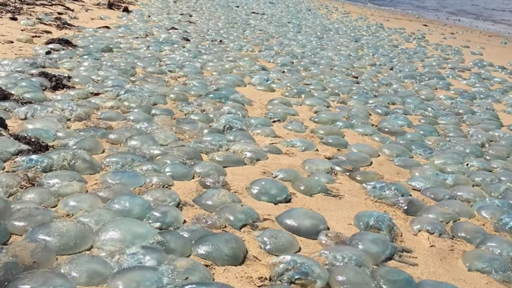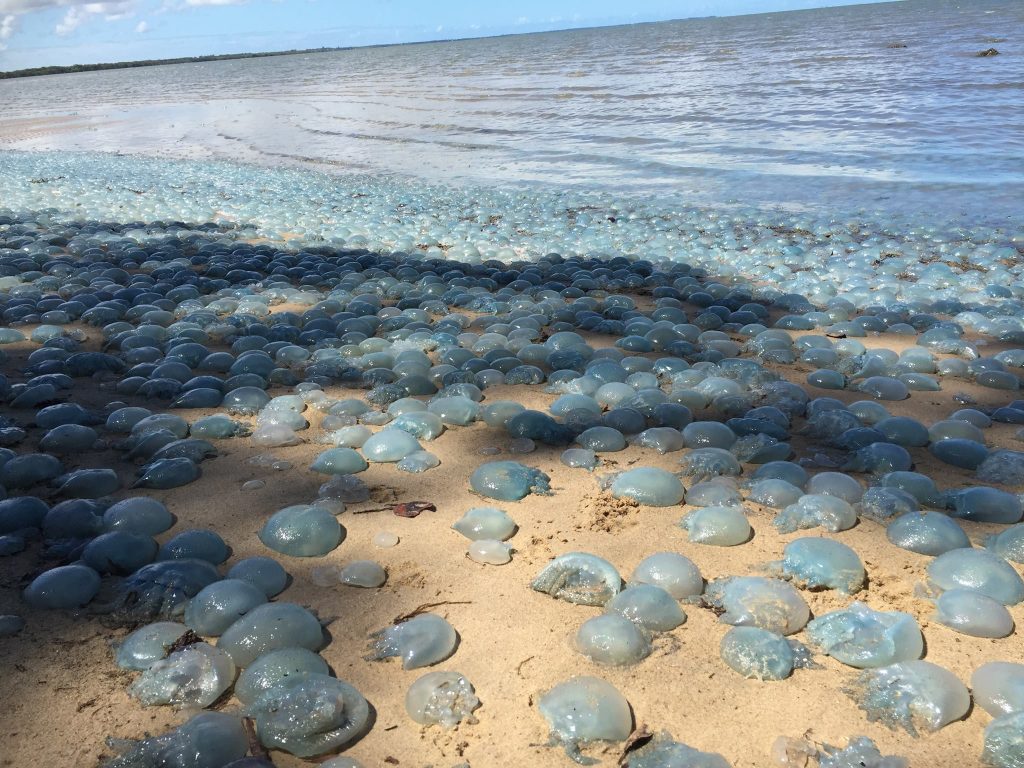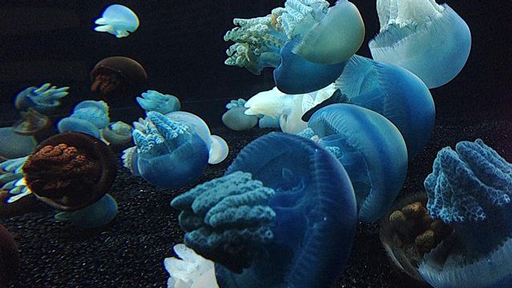
No, that’s not a giant layer of bubble wrap on the beach. You’re looking at thousands of blue blubber jellyfish that washed ashore in Australia.

Facebook user Charlotte Lawson captured photos of the striking scene, which took place at Deception Bay Beach in Queensland, Australia.
Blubber jellies range in color from brown to white, but blue blubbers are the most common kind in Queensland. They can grow up to 13 inches in diameter, and their sting, while painful, is not usually harmful to humans.

Blue blubber jellyfish typically swim in dense swarms just below the water’s surface and occasionally wash up on beaches, according to Queensland Museum.
Marine biologist Lisa-Ann Gershwin told ABC News that this massive congregation of jellies was probably due to “the combination of northerly winds and tide conditions.”
The phenomenon in which large numbers of jellyfish cluster together in the ocean is known as a “bloom” and it’s been happening more often lately. Huge blooms can do a lot of damage, with the jellies clogging nuclear power plant pipes and wreaking havoc on fisheries.

Scientists aren’t sure what causes these massive blooms, but climate change and overfishing of predators like sea turtles and jelly-eating fish could be factors in the proliferation of jellyfish populations in recent years.

As for what happened to the jellies in the photos? Sadly, they dried up within a few days. Jellyfish can’t actually survive on land, since they need to diffuse oxygen from the water into their cells.
Video of blue jellyfish in an aquarium:




